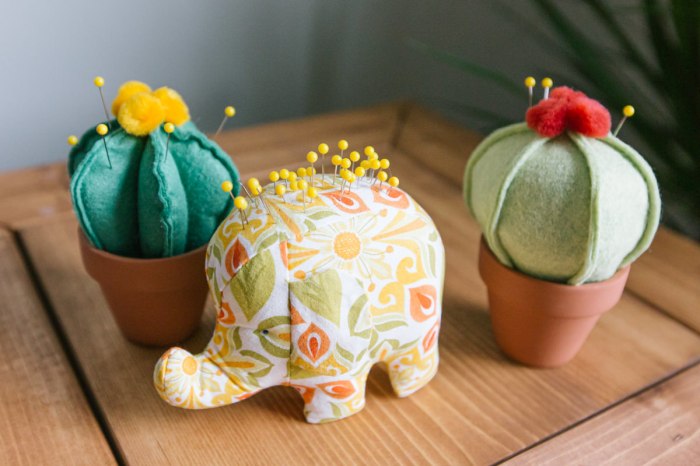Epoxy basement floor DIY is a fantastic way to give your basement a fresh, durable, and stylish makeover. This project allows you to transform a drab and often overlooked space into a functional and attractive area for various purposes, from a home office to a recreational room.
Whether you’re seeking to enhance the aesthetic appeal, protect your floor from moisture and stains, or simply add a touch of personality to your basement, epoxy flooring offers a versatile and cost-effective solution. This guide will walk you through the process, from choosing the right epoxy to applying it flawlessly.
Common Mistakes to Avoid
Epoxy floor installation is a relatively simple DIY project, but there are a few common mistakes that can lead to a less than perfect finish. By avoiding these mistakes, you can ensure a smooth, durable, and attractive epoxy floor that will last for years to come.
Poor Surface Preparation
Proper surface preparation is crucial for a successful epoxy floor. A clean, dry, and smooth surface allows the epoxy to adhere properly and prevents problems like peeling or cracking.
- Failure to Remove Existing Coatings: Old paint, sealant, or other coatings can interfere with the epoxy’s adhesion. Make sure to remove them completely before applying the epoxy.
- Not Filling Cracks and Holes: Cracks and holes in the concrete can create weak spots in the epoxy floor. Fill them with a suitable patching compound before applying the epoxy.
- Ignoring Dust and Debris: Dust and debris can create imperfections in the epoxy finish. Thoroughly clean the concrete surface with a vacuum cleaner or a damp cloth before applying the epoxy.
- Not Using a Primer: A primer helps to improve the adhesion of the epoxy to the concrete surface. Use a primer specifically designed for epoxy floors.
Incorrect Mixing Ratios
Mixing the epoxy and hardener in the correct ratio is essential for achieving the desired strength and durability.
- Using Too Much Hardener: This can lead to a brittle epoxy that is prone to cracking.
- Using Too Little Hardener: This can result in a weak epoxy that will not cure properly.
Improper Application
The way you apply the epoxy can significantly affect the final finish.
- Using Too Much Epoxy: This can lead to uneven surfaces and air bubbles. Apply the epoxy in thin, even coats.
- Not Using a Roller: A roller helps to create a smooth, even finish. Use a roller specifically designed for epoxy floors.
- Not Allowing Enough Drying Time: Epoxy needs time to cure properly. Allow the epoxy to dry completely before applying a second coat or walking on the floor.
Inadequate Ventilation
Epoxy fumes can be harmful to your health, so it’s important to ensure adequate ventilation during the installation process.
- Not Opening Windows and Doors: Open windows and doors to allow fresh air to circulate.
- Not Wearing a Respirator: Wear a respirator to protect yourself from the fumes.
Epoxy Floor Maintenance and Care: Epoxy Basement Floor Diy
Epoxy floors are durable and long-lasting, but they still require proper maintenance and care to keep them looking their best. This guide will discuss the essential steps to maintain your epoxy floor, ensuring it stays pristine and functional for years to come.
Cleaning Methods and Products
Regular cleaning is essential for maintaining the appearance and lifespan of your epoxy floor. Here’s a breakdown of the best practices for cleaning your epoxy floor:
- Sweeping and Dusting: Start with a daily sweep using a soft-bristled broom or dust mop to remove dust, dirt, and debris. This prevents the accumulation of abrasive particles that can scratch the epoxy surface.
- Mopping: For deeper cleaning, mop the floor with a pH-neutral cleaner specifically designed for epoxy floors. Avoid harsh chemicals like bleach, ammonia, or acidic cleaners, as they can damage the epoxy coating.
- Spot Cleaning: For spills or stains, use a damp cloth with a mild detergent or a specialized epoxy floor cleaner. Wipe the affected area gently, ensuring the cleaning solution doesn’t sit for too long, which could cause discoloration.
- Heavy-Duty Cleaning: For tougher stains or heavy grime buildup, you can use a commercial epoxy floor cleaner. Always follow the manufacturer’s instructions carefully and test the cleaner on an inconspicuous area before applying it to the entire floor.
Safety Precautions
Epoxy is a powerful substance that can be dangerous if not handled correctly. It’s important to take necessary precautions to protect yourself and your environment. Here’s a breakdown of the essential safety measures to follow when working with epoxy.
Personal Protective Equipment (PPE)
It’s crucial to wear appropriate personal protective equipment (PPE) to minimize the risk of exposure to epoxy. This includes:
- Gloves: Wear nitrile or neoprene gloves to protect your skin from contact with epoxy. Choose gloves that are resistant to chemicals and solvents.
- Eye Protection: Always wear safety goggles to protect your eyes from epoxy splashes or fumes. Goggles should be specifically designed for chemical protection.
- Respiratory Protection: In poorly ventilated areas or when working with epoxy containing volatile organic compounds (VOCs), use a respirator to prevent inhaling harmful fumes. Choose a respirator with appropriate cartridges or filters for epoxy fumes.
- Clothing Protection: Wear long-sleeved shirts and long pants to minimize skin contact with epoxy. Avoid wearing loose-fitting clothing that could get caught in machinery or equipment.
- Foot Protection: Wear closed-toe shoes or boots to protect your feet from spills or splashes.
Ventilation
Proper ventilation is crucial to prevent the buildup of harmful fumes.
- Open Windows and Doors: If working indoors, ensure adequate ventilation by opening windows and doors.
- Use Fans: If natural ventilation is insufficient, use fans to circulate air and remove fumes.
- Use Respirator: In poorly ventilated areas, use a respirator to protect yourself from fumes.
Fire Safety
Epoxy is flammable, so it’s important to take precautions to prevent fires.
- Keep Flammables Away: Store epoxy away from heat sources and flammable materials.
- Use Non-sparking Tools: Use non-sparking tools to avoid igniting epoxy fumes.
- Have Fire Extinguisher on Hand: Keep a fire extinguisher readily available in case of a fire.
First Aid
In case of contact with epoxy, it’s important to know how to provide first aid.
- Skin Contact: Remove contaminated clothing and wash affected areas with soap and water. If irritation persists, seek medical attention.
- Eye Contact: Flush eyes with plenty of water for at least 15 minutes. Seek medical attention immediately.
- Ingestion: Do not induce vomiting. Seek medical attention immediately.
- Inhalation: Move to fresh air. If breathing difficulty occurs, seek medical attention immediately.
Storage and Disposal
Proper storage and disposal of epoxy are essential for safety.
- Storage: Store epoxy in a cool, dry, well-ventilated area away from heat sources and direct sunlight.
- Disposal: Dispose of epoxy according to local regulations. Contact your local waste management authority for guidance on proper disposal methods.
Additional Tips
- Read and Understand Safety Data Sheets (SDS): Before working with epoxy, read and understand the safety data sheet (SDS) provided by the manufacturer. The SDS contains detailed information about the product’s hazards, handling, storage, and disposal.
- Avoid Mixing Epoxy in Enclosed Spaces: Mixing epoxy in enclosed spaces can create hazardous fumes. If you must mix epoxy indoors, ensure adequate ventilation.
- Clean Up Spills Immediately: Clean up spills immediately to prevent them from becoming a hazard. Use appropriate cleaning materials and dispose of them properly.
- Do Not Mix Different Brands of Epoxy: Mixing different brands of epoxy can lead to unpredictable results and potentially hazardous reactions.
- Store Epoxy in Original Containers: Always store epoxy in its original container to prevent contamination.
- Avoid Contact with Skin and Eyes: Be mindful of epoxy fumes and avoid inhaling them.
Cost Considerations
A DIY epoxy basement floor project can be a cost-effective way to transform your space, but it’s important to consider the various expenses involved. By understanding the costs, you can make informed decisions and budget accordingly.
Cost Breakdown
The cost of a DIY epoxy basement floor project varies depending on factors such as the size of the area, the type of epoxy used, and the complexity of the project. Here’s a breakdown of the typical costs:
- Epoxy Resin and Hardener: This is the primary cost, ranging from $25 to $100 per gallon, depending on the brand and type of epoxy. For a standard basement, you’ll likely need 2-3 gallons.
- Primer: A primer is essential for adhesion and can cost between $20 to $50 per gallon.
- Tools and Supplies: You’ll need tools like rollers, brushes, mixing buckets, stir sticks, safety gear (gloves, respirator), and cleaning supplies. These items can cost anywhere from $50 to $150.
- Floor Preparation: If your basement floor requires extensive repairs or cleaning, additional costs may arise. For example, concrete patching or floor cleaning can range from $100 to $500 depending on the extent of work.
- Optional Extras: Consider additional costs for decorative flakes, pigments, or special finishes. These can add a touch of personalization but will increase the overall budget.
DIY vs. Professional Contractor
While DIY epoxy floor projects can save money, hiring a professional contractor comes with advantages and costs.
- Professional Installation: A professional contractor can ensure a high-quality, durable, and seamless finish. They have the experience and expertise to handle complex projects and guarantee proper application.
- Time Savings: Hiring a contractor saves you time and effort. They can complete the project quickly and efficiently, allowing you to focus on other tasks.
- Cost: Professional installation typically costs more than DIY. Prices vary depending on the contractor’s experience, location, and project complexity. Expect to pay anywhere from $3 to $8 per square foot.
Epoxy vs. Other Flooring Options
Choosing the right flooring for your basement can be a daunting task, with numerous options available. Each material has its own set of pros and cons, impacting durability, aesthetics, cost, and maintenance requirements. This section will delve into the comparison of epoxy flooring with other popular basement flooring options.
Concrete Paint
Concrete paint offers a budget-friendly solution for covering your basement floor. While it provides a layer of protection and can be customized with various colors, it lacks the durability and longevity of epoxy flooring. Concrete paint is prone to chipping, cracking, and fading over time, especially in high-traffic areas. Moreover, it’s not as moisture-resistant as epoxy, making it susceptible to water damage.
Tile
Tile flooring is a popular choice for basements due to its durability, moisture resistance, and aesthetic versatility. It offers a wide range of styles, colors, and materials to match any design preference. However, tile installation can be complex and labor-intensive, requiring specialized skills and tools. Additionally, grout lines between tiles can trap dirt and grime, necessitating regular cleaning and maintenance. Tile can also be cold and hard underfoot, requiring rugs or mats for comfort.
Carpet, Epoxy basement floor diy
Carpet is a comfortable and aesthetically pleasing option for basements, offering warmth and sound insulation. However, it’s not ideal for basements prone to moisture, as it can trap moisture and become a breeding ground for mold and mildew. Regular cleaning is crucial to maintain its appearance and prevent the growth of allergens. Carpet can also be expensive to install and replace, and it’s susceptible to stains and wear and tear.
Inspiration and Case Studies
Transforming your basement into a functional and stylish space can be a rewarding project, and epoxy flooring is a popular choice for achieving a sleek and durable finish. Seeing real-world examples can spark your creativity and help you envision the possibilities for your own basement floor.
Epoxy Basement Floor Design Ideas
Here are some inspiring examples of epoxy basement floor projects that showcase the versatility and beauty of this flooring option:
- Industrial Chic: A dark gray epoxy floor with a metallic flake finish creates a modern and industrial vibe, perfect for a basement workshop or entertainment area. The metallic flakes add a touch of shimmer and depth, enhancing the overall aesthetic.
- Contemporary Minimalism: A white or light gray epoxy floor with a smooth, polished finish complements a contemporary design aesthetic. This option creates a clean and spacious feel, making the basement appear larger and more inviting.
- Rustic Charm: An epoxy floor with a textured finish, such as a granite or quartz pattern, adds a touch of rustic charm to a basement. This option can create a warm and inviting ambiance, complementing traditional or farmhouse decor.
- Bold Statement: Epoxy floors can be customized with unique colors and patterns. For example, a vibrant red or blue epoxy floor with a geometric design can make a bold statement and create a focal point in the basement.
- Personalized Design: Epoxy floors can be customized with personalized elements, such as company logos, family names, or inspirational quotes. This adds a unique touch and makes the basement feel more personal.
Epoxy Basement Floor Projects
These real-life projects demonstrate how epoxy flooring can enhance different basement spaces:
- Home Gym: A homeowner transformed their basement into a functional home gym by installing a black epoxy floor with red accents. This creates a visually stimulating and motivating environment for workouts.
- Entertainment Room: An entertainment room with a sleek gray epoxy floor and a built-in bar area provides a sophisticated and modern space for hosting guests. The epoxy floor adds a touch of elegance and durability to the room.
- Workshop: A homeowner used epoxy flooring to create a durable and easy-to-clean workspace in their basement workshop. The epoxy floor resists stains and chemicals, making it ideal for a space where tools and materials are used.
- Playroom: A family transformed their basement into a colorful and fun playroom for their children. The epoxy floor features a bright blue base with playful patterns and accents, creating a stimulating and engaging space for kids.
- Home Office: A homeowner created a professional and inspiring home office in their basement with a sleek white epoxy floor. This creates a clean and minimalist workspace that promotes focus and productivity.
By carefully following the steps Artikeld in this guide, you can successfully complete your epoxy basement floor DIY project. From the initial preparation to the final touches, the process is manageable and rewarding. With a little effort and the right tools, you’ll have a stunning and long-lasting floor that will enhance the beauty and functionality of your basement.
Epoxy basement floors are a great way to create a durable and attractive surface. You can even use epoxy to create a custom design, like a faux tile pattern. If you’re feeling ambitious, you could even build a small coop for your quail in the basement, using the same epoxy for a durable floor. Check out this guide for building a DIY quail coop.
Once you’ve finished your epoxy project, you’ll have a stylish and functional space for years to come.




